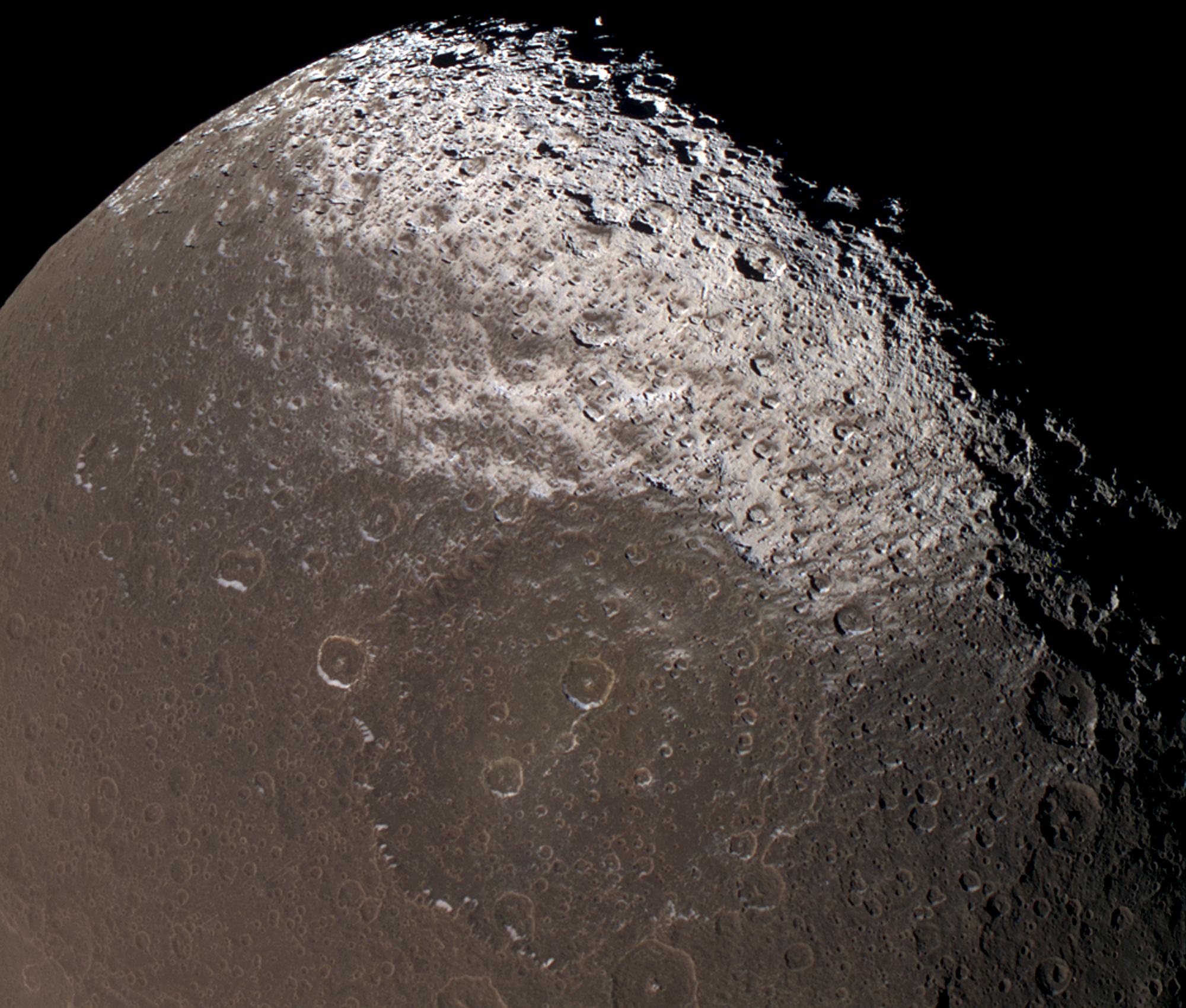You are here
Two-Tone Moon
An up-close view of Iapetus reveals that the large moon of Saturn has a two-toned appearance. The white material is ice, which covers almost an entire hemisphere (this view shows only a small portion of the hemisphere). The other hemisphere is completely dark. It is coated with material that may have been blasted off the surface of another moon, Phoebe, during collisions with big space rocks. The equator of Iapetus features a ridge of tall mountains, making the moon look a bit like a walnut. Jean-Dominique Cassini discovered the moon 350 years ago, on October 25, 1671. This image was snapped by the Cassini spacecraft in 2004, from a distance of about 107,435 miles (172,900 km). [NASA/JPL/Space Science Institute]




